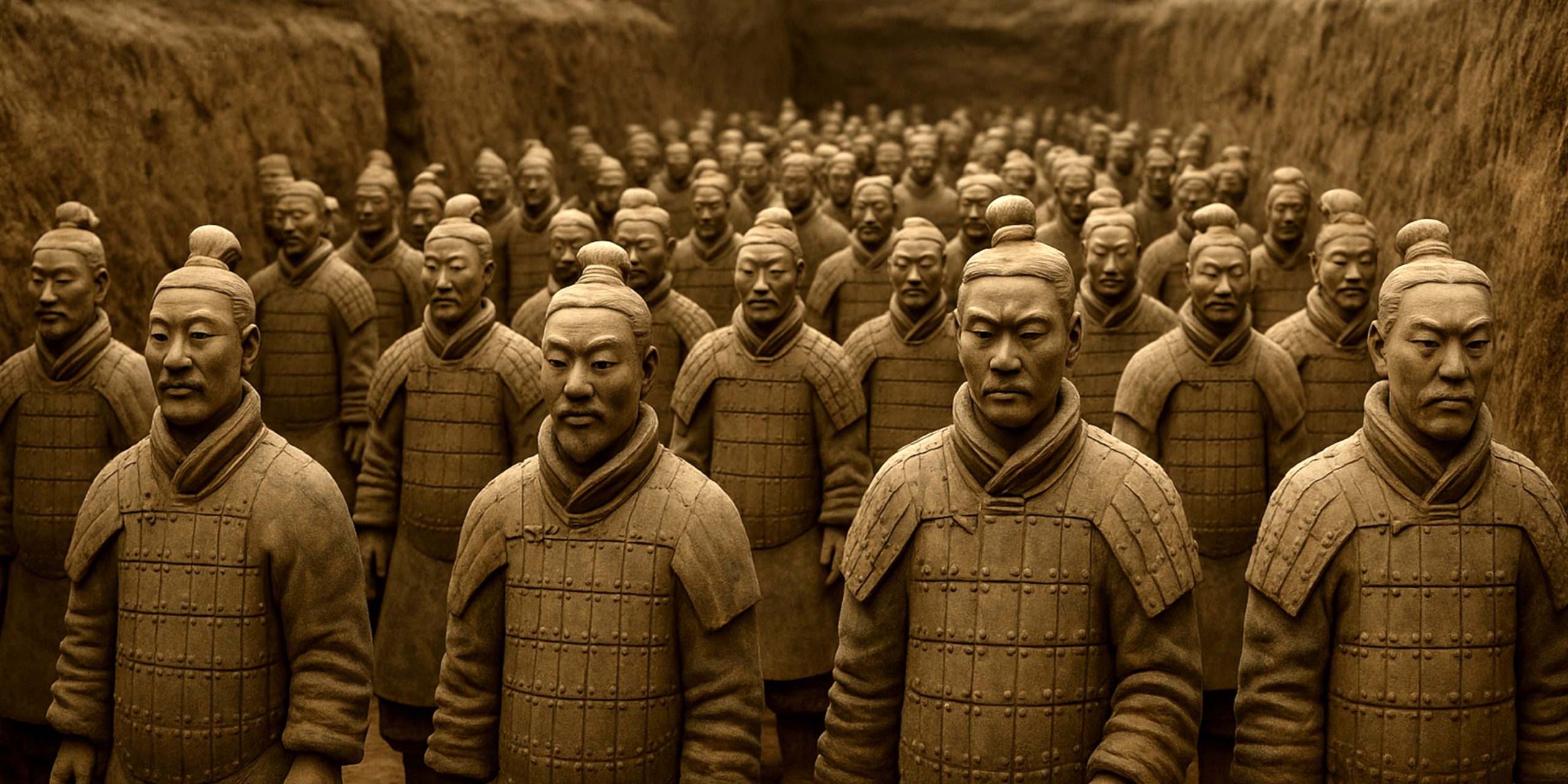
Some of the most important archaeological discoveries were not made by trained professionals digging for years, but by people who happened upon something remarkable while going about their daily lives. Whether stumbled upon by farmers, construction workers, or children, these finds have changed how we understand history. Below are some of the most significant accidental discoveries that were, quite literally, hidden in plain sight.
The Terracotta Army (China)
In 1974, local farmers in Xi’an were digging a well when they uncovered fragments of what turned out to be life-sized clay soldiers. This led to the unearthing of the Terracotta Army, a vast underground complex created to guard the tomb of Qin Shi Huang, the first Emperor of China. The site includes thousands of soldiers, horses, and chariots—each with unique features—buried for over 2,000 years.
The Rosetta Stone (Egypt)
During Napoleon’s military campaign in Egypt in 1799, French soldiers demolishing an old wall at Fort Julien discovered a slab of stone covered in writing. This stone, now famous as the Rosetta Stone, contained the same text in Greek, Demotic, and Egyptian hieroglyphs. It became the key to deciphering ancient Egyptian script and unlocking centuries of lost language and culture.
Sutton Hoo Ship Burial (England)
In 1939, Edith Pretty, the owner of a Suffolk estate, asked local archaeologist Basil Brown to investigate the large burial mounds on her land. What he found in one of them was a remarkably preserved Anglo-Saxon ship containing a wealth of gold, silver, and armour—thought to be the resting place of an elite figure, possibly King Rædwald. The discovery radically transformed perceptions of early medieval Britain.
Lascaux Cave Paintings (France)
In 1940, four teenage boys and a dog chasing a rabbit stumbled into a cave in southwestern France. Inside, they found some of the best-preserved examples of Upper Palaeolithic cave art, featuring detailed paintings of animals and symbols estimated to be over 17,000 years old. The Lascaux caves gave historians invaluable insight into the lives and beliefs of early humans.
The Dead Sea Scrolls (Israel/West Bank)
In 1947, a Bedouin shepherd throwing stones into a cave near Qumran heard the shatter of pottery. Investigating further, he found clay jars containing ancient scrolls. These became known as the Dead Sea Scrolls—biblical manuscripts dating from the 3rd century BCE to the 1st century CE. They represent one of the most significant religious and linguistic finds of the 20th century.
The Riace Bronzes (Italy)
In 1972, a scuba diver swimming off the coast of Calabria discovered two bronze statues lying in the sand. The Riace Bronzes are rare surviving examples of ancient Greek sculpture, estimated to date back to the 5th century BCE. Their realism and condition stunned art historians and offered a rare glimpse into classical Greek artistry.
Ötzi the Iceman (Austria-Italy Alps)
Two German hikers in 1991 came across what they thought was a recent body frozen in a glacier. It turned out to be Ötzi, a naturally mummified man from over 5,000 years ago. The body and his possessions—including a copper axe, clothing, and tools—provided an unprecedented window into life during the Copper Age.
Chance and Curiosity
These accidental discoveries serve as reminders that history is often closer than we think. Walls, fields, caves, and riverbeds can hide extraordinary artefacts for centuries until weather, conflict, or sheer chance brings them to light. Each find not only reshapes our historical timelines but also challenges assumptions about the sophistication, beliefs, and daily lives of those who came before us.



